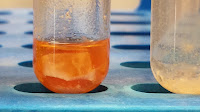In this blog post I will answer and provide supporting evidence for the question, Is Sex Important? And the short answer is yes. I will delve further into the reasoning and evidence for this answer in four main categories. The benefits of reproducing sexually, the costs of reproducing sexually, the benefits of reproducing asexually and the costs of reproducing sexually. Finally I will summarize all my points and justify why reproducing sexually is the better and safer way to reproduce.
Benefits of reproducing sexually:
Because of the concept of natural selection, genetic variation is crucial to survival. Without genetic variation, there is no evolution, and thus no survival. Genetic variation comes from two main sources mutation and sex.
Sexual Reproduction Benefit 1:
Sexual reproduction is the more sophisticated form of genetic variation. Mutations are random changes to information contained in genes, and is more primitive than sexual reproduction. Mutations only arise from errors made by the cells genetic copying machinery.
Make no mistake, sexual reproduction only produces combinations of genes that already exist, whereas mutation creates altogether new genes, and thus is necessary for generating the raw material of evolution. According to Dr. Tatiana, "Without mutation, evolution would grind to a halt"
Sexual Reproduction Benefit 2:
Although mutations may be necessary, mutation alone is not enough. When organisms evolve to give up sex, and reproduce asexually instead. (I will explain more about the benefits and harms of asexual reproduction in the following sections, thus is just a comparison between sexual and asexual reproduction)
When an organism reproduces asexually, the differences between a parent are a child, are only due to mutation. According to Dr. Tatiana, "At first, these organisms often flourish. But their glory is fleeting. For reasons that remain mysterious, the loss of sex is almost always followed by a swift extinction."
Although there is one exception to this rule, the need for new combinations of genes that already exist are necessary, and without sexual reproduction, organisms cannot flourish. Most organisms need both sexual reproduction and mutations to properly survive and evolve.
Sexual Reproduction Benefit 3:
The final benefit of sexual reproduction is the ability to reproduce diverse offspring. I previously touched about this at the end of my first point, when I mentioned that in asexual organisms, mutations account for every difference in an organisms genetic makeup.
However, I never applied the importance of this to why sexually reproducing diverse offspring is good and why only mutational differences are bad. I will get to the cons of mutations differences in the "Asexual Reproduction costs," but for now, I will explain why having diverse offspring is helpful.
When having diverse offspring, organisms can ensure that the offspring will always be a combination of the two parents' genes and will never be the exact same, whereas in asexual reproduction, you can never control when mutations should happen.
For example if there is a poison in the environment, and for an organism to survive they need a particular gene. Asexual reproduction might take centuries for that organism to undergo a mutation that gives them that gene, and by the time that might happen, the organism will probably be extinct.
According to Dr. Tatiana, "More often than not, however, some individuals are fortunate and have a gene to resist the poison. Since these individuals are the only ones fo survive and reproduce, the genetic makeup of the population will shift to one where everybody is resistant.
Basically what this means is that sexual reproduction allows organisms to create offspring with genetic variation that might have the gene that resists the poison - If an organism does not have the necessary gene, but their mate does, then the offspring will have a good chance at getting the necessary gene and surviving the poison. Although this is not guaranteed, sexual reproduction allows organisms a better chance to survive the poison.
Sexual Reproduction Benefit 4:In my last point I discussed, how sexual reproduction would give organisms the ability to protect against a poison already spreading through the environment. They did this by mating with other organisms of their species that had a protective gene, to create an offspring that would survive.
This point is similar but it talks about how the genetic variations that sex provides with every reproductions, helps species and organisms survive - you could call it a contingency plan of sorts for the organism to almost always live on.
Genetic variations in every organism, allow each an every organism to have certain genes that protects them against almost any situation. According to Dr. Tatiana, "Monocultures are vulnerable to disease because all the individuals are the same clone," however, sexually reproducing organisms are not as vulnerable, because at least one of the organism should have the necessary genes to protect against anything.
This ensures that organisms that use sexual reproduction, will always survive any attack or poison, and live long, as all of them have different genetic makeups. The only reason that a sexually reproducing organism to go extinct is a drastic change in the habitability of their environment.
Sexual Reproduction Cost 1:
Sexual reproduction is hard to accomplish, and sometimes is a dangerous process. As opposed to asexual reproduction, sex requires two mates. This means that organisms have to seduce each other in order to reproduce sexually.
According to Dr. Tatiana, "the competition for mates is often exceedingly stiff." Creatures might need to wear gaudy costumes, sing for hours on end, or perform prodigious feats to get a mate. Worse, the competition for mates is often at odds with survival. If you are a bird, flaunting an enormous tail may make you quite the cock among hens, but it also may make you lunch for a cat.
Sexual Reproduction Cost 2:
Another problem in the process of sexual reproduction is the time it takes, not only to find a mate, but to give birth to another organism. Although the time it takes to give birth to the organism may differ among different species, the time it takes to find a mate is never quick nor easy, as explained in my last point.
Asexually reproducing organisms do not need to find a mate, thus the time it takes for them the produce offspring is significantly shorter than the time is takes a sexually reproducing organism to do the same.
Additionally the chance to make clones, or produce multiple offspring, although possible is very rare in sexually reproducing organisms. In asexually reproducing organisms, there is a much higher chance is producing multiple offspring each time.
Furthermore, in sexually producing organisms, for example humans, there is usually a time limit between reproducing multiple times, whereas in asexually reproducing organisms, there is usually no time limit. Thus populations of asexual organisms usually grow at a much faster rate, than sexually reproducing organisms.
Asexual Reproduction Benefit 1:
Asexual organisms can reproduce faster and more effectively than sexually reproducing. According to Dr. Tatiana, "Sex may be fun, but cloning is much more efficient. All else being equal, an asexual female who appears in a population should have twice as many offspring as her sexual counterpart."
The reasoning for this is because in a sexual population, for example the human population, each female must have two children for the population to stay the same size. To cause the population to grow, each female in the population needs to average more than 2 children. If females average less than 2 children in a sexually reproducing population, the population will automatically shrink.
However, if an asexual female reproduces, it ensures that the population size will be maintained. If the organism reproduces more than once, then the population will automatically grow.
Asexual reproduction is easy and does not take much time, while still allowing asexually reproducing species to produce multiple mates.
In asexual reproduction there is not necessity to find a mate, significantly lowering the time and difficulty it takes to reproduce. Additionally the reproduction itself does not take as much time as sexual reproduction.
Another benefit that comes with the time factor is the quantity. Because of the shortened time and small amount of difficulty, asexually reproducing species can reproduce many more offspring in a small amount of time that sexually reproducing species can produce in a lifetime.
Asexual Reproduction EXAMPLE - Benefit 3:
One perfect example of an asexually reproducing species that has lived long for 85 million years is the philodina. It has not needed a single mate, and has produced many offspring.
Asexual Reproduction Cost 1:
Asexually reproducing organisms have no genetic variation. All the offspring of asexually reproducing organisms are genetically identical, aside from mutations that take place. This means that every asexually reproducing organism is resistant to change.
This is one of the primary reasons that asexually reproducing species, according to Dr. Tatiana, "swiftly go extinct." If there is a poison, if one asexual organism in a species does not have a gene to fight the poison or virus, then none of the species will survive.
However, in sexually reproducing organisms, like humans, certain organisms have different genes that give them the ability to fight off viruses and diseases (as mentioned in the first benefit of sexual reproduction), even if one of the organisms die because of the virus.
These are the reasons that most sexually reproducing organisms thrive in our society, while asexual reproducing species usually go extinct swift because of pathogens that they are not resistant to.
Questions and What you want to learn more about:
I really want to learn more about the how pathogens affect sexually reproducing species versus asexually reproducing species.
I did not really understand why and how mutations happen, and what genes they specifically alter.



















